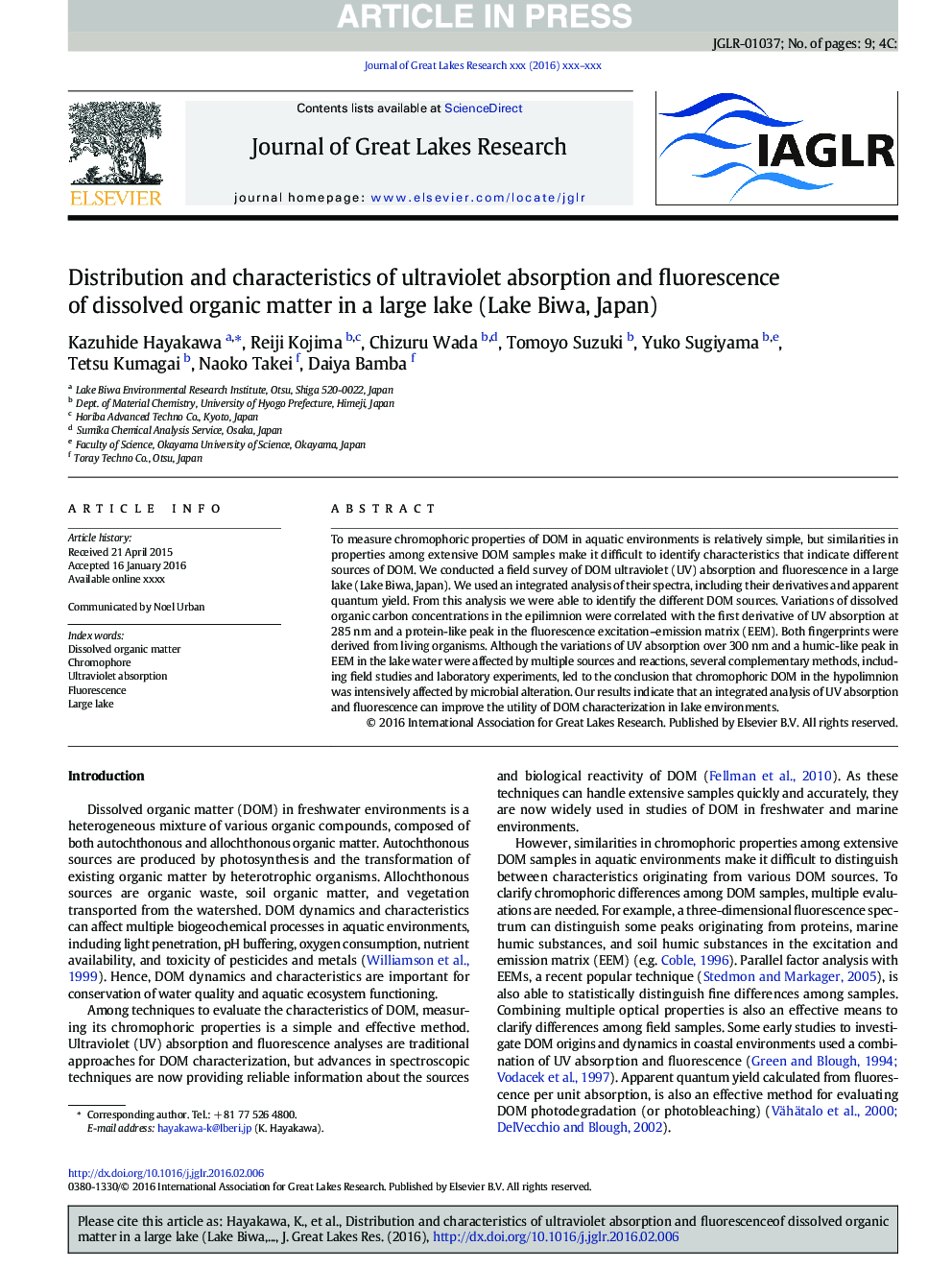| Article ID | Journal | Published Year | Pages | File Type |
|---|---|---|---|---|
| 6304659 | Journal of Great Lakes Research | 2016 | 9 Pages |
Abstract
To measure chromophoric properties of DOM in aquatic environments is relatively simple, but similarities in properties among extensive DOM samples make it difficult to identify characteristics that indicate different sources of DOM. We conducted a field survey of DOM ultraviolet (UV) absorption and fluorescence in a large lake (Lake Biwa, Japan). We used an integrated analysis of their spectra, including their derivatives and apparent quantum yield. From this analysis we were able to identify the different DOM sources. Variations of dissolved organic carbon concentrations in the epilimnion were correlated with the first derivative of UV absorption at 285Â nm and a protein-like peak in the fluorescence excitation-emission matrix (EEM). Both fingerprints were derived from living organisms. Although the variations of UV absorption over 300Â nm and a humic-like peak in EEM in the lake water were affected by multiple sources and reactions, several complementary methods, including field studies and laboratory experiments, led to the conclusion that chromophoric DOM in the hypolimnion was intensively affected by microbial alteration. Our results indicate that an integrated analysis of UV absorption and fluorescence can improve the utility of DOM characterization in lake environments.
Related Topics
Physical Sciences and Engineering
Earth and Planetary Sciences
Earth and Planetary Sciences (General)
Authors
Kazuhide Hayakawa, Reiji Kojima, Chizuru Wada, Tomoyo Suzuki, Yuko Sugiyama, Tetsu Kumagai, Naoko Takei, Daiya Bamba,
